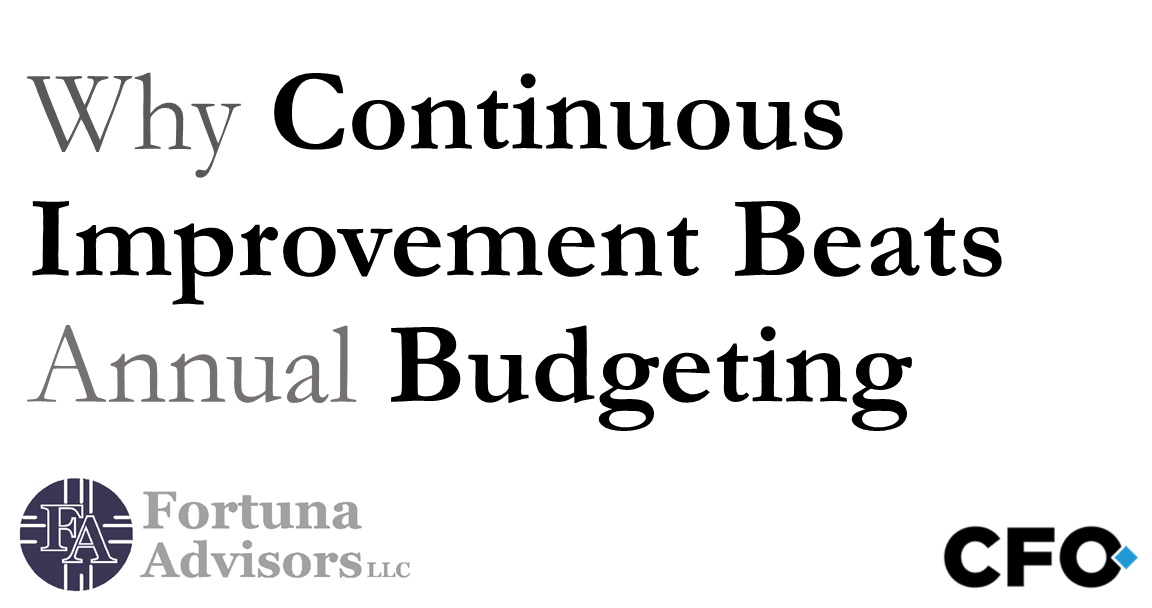In a previous article, I explained the importance of delivering a return on capital that exceeds the weighted average cost of capital (WACC) to create value for shareholders. In 2015, one out of five non-financial companies in the S&P 500 earned a return on capital below their WACC.
Think 2015 was a fluke? Well, over each of the last five years, an average of 19% of these companies failed to beat their cost-of-capital hurdle. How do so many companies fall short of earning an adequate return for the stakeholders of their business?
To be sure, every year, thousands of company hours are allocated to the annual budgeting process, during which strategies are defined, plans are presented, and goals are approved. But once these plans are funded, managers typically go back out to the field and continue to do what they did before.
To deliver shareholder value consistently, however, managers must operate within a long-term system of continuous improvement. And that system must be based on a comprehensive performance measurement that incorporates the cost of capital.
Further, to enforce accountability among managers, this performance measure must be influenced by actual results and not by predictions such as those found in the form of negotiated budgets. And to ensure long-term value creation, it must encourage the right behaviors.
The baseline in a continuous improvement incentive program is last year’s performance: Generating more is better and less is worse. To embrace absolute performance and let go of performance against budgets, however, you need a comprehensive metric.
Your performance measure should be used to encourage team members to think and act like owners of the business, which involves embracing two important concepts. First, they must be willing to make decisions that benefit the long-term, even if it comes at the expense of the short-term. Second, they must have the ability to effectively balance the trade-offs of complex business decisions.
Such performance measures as revenue and operating profit are often used in the belief that the simple calculations will be easier for managers to understand. But the absence of the cost of capital from such metrics impairs a manager’s ability to think holistically about the business throughout the year. Opportunities to better manage inventory and accounts receivable, for example, are lost because cost of capital is ignored within these earnings-based measures.
On the other hand, economic-profit based measures such as residual cash earnings (“RCE”), enable team members to easily balance growth, margin, and asset efficiency tradeoffs within their business. This is achieved by converting capital to an expense, which is then deducted from earnings, allowing team members to make better decisions by factoring in all costs of the business. Cost-efficiency improvements which require capital investments, for example, can be easily analyzed within this methodology.
When putting its chosen performance metric to work in terms of execution, management must embrace the important concept of separating planning from incentive-target setting. To build a company that aims to be a leader in its field, incentives need to be based on actual results rather than performance against an arbitrary budget. Team members must be focused on developing and executing their plans better each year by having a continuous improvement priority.
Since it captures the full cost of doing business, RCE can be a powerful ally in creating the right incentives for continuous improvement. As a per-dollar measure, it can be used to challenge team members to generate sufficient earnings to cover the cost of the capital they use in their business. Unlike free cash Flow, RCE recognizes that investments pay off over time and does not overburden new investments with a one-year payback hurdle for profitability.
What if RCE declines? That’s when a continuous improvement program can be much more effective than one based on annual budgets. Over a multi-year period, all that matters in a continuous improvement system is cumulative performance. If performance drops and then recovers in the following year, every dollar given up in year-one bonuses is earned when performance rebounds in year two.
Thus, if RCE increases by $100 million over three years, the total bonus payouts to managers over that period will be the same regardless of the path traveled to get there. Did the business see a $75 million increase in RCE between years one and two, but only a $25 million increase in year three?
In that case, managers would receive a large bonus for year two’s performance and a smaller bonus for year three.
What if the business suffered a decline in RCE in year two but in year three rebounded to capture the $100 million change? Managers’ bonuses would then be smaller in year two than year three, although the cumulative bonuses received would not change. The long-term trend is what matters most.
Over the life of a business, many tough decisions will need to be made. The goal is for team members to make decisions that they believe will strengthen and best position the company for the future, regardless of the short-term implications. A continuous improvement focus can make team members indifferent to short-term performance fluctuations, and encourage them to think longer term—like owners.

